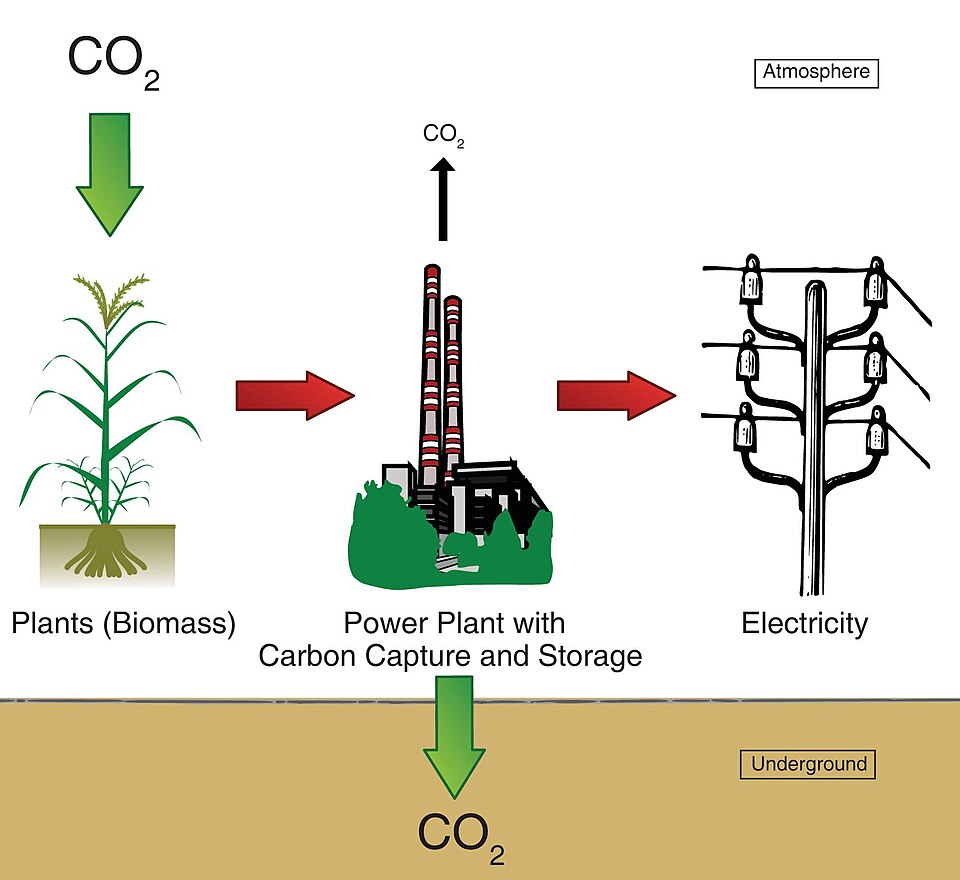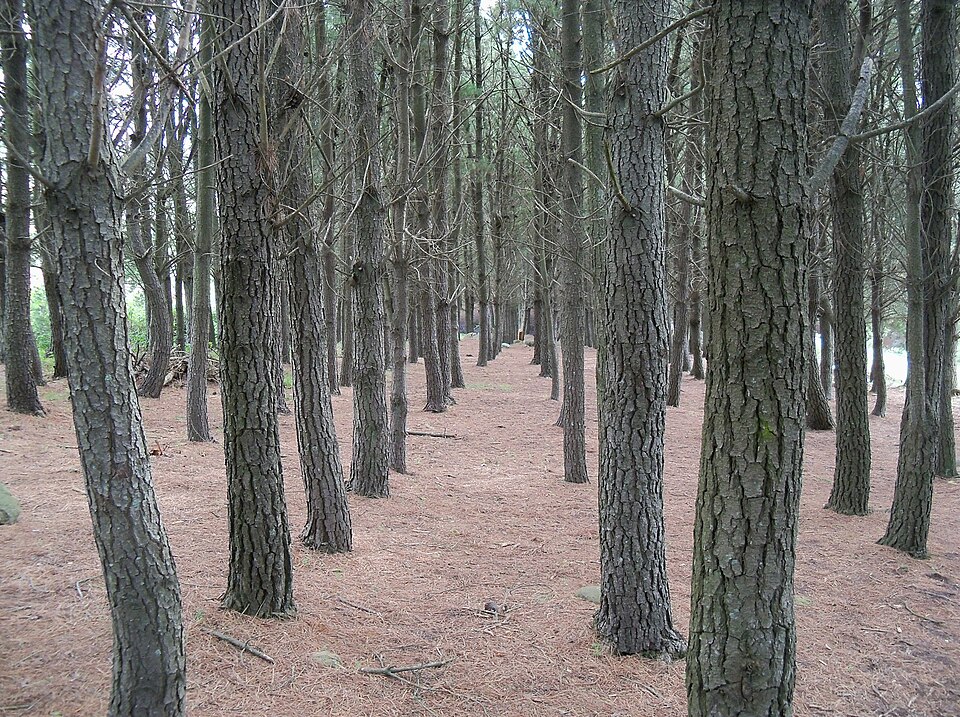AQA Specification focus:
‘Human interventions in the carbon cycle to influence transfers and mitigate climate change.’
Understanding human interventions in the carbon cycle is key to evaluating how society is addressing climate change and altering natural carbon flows.
The Carbon Cycle and Human Activity
Overview of the Carbon Cycle
The carbon cycle describes the movement of carbon between Earth's major reservoirs: the atmosphere, lithosphere, hydrosphere, biosphere, and cryosphere. In natural systems, this cycle maintains dynamic equilibrium, with balanced inputs and outputs of carbon over time. Human activity, however, has significantly disrupted this balance.
Key Human Interventions
Humans intervene in the carbon cycle both deliberately — to reduce climate change — and inadvertently through industrial and land use practices. These interventions aim to alter carbon transfers or reduce atmospheric carbon concentrations.
Fossil Fuel Management
Combustion and Emissions
Combustion of fossil fuels (coal, oil, and natural gas) for energy and transport is the leading cause of increased atmospheric CO₂. It releases carbon sequestered over millions of years in the lithosphere.
Human combustion activities include:
Power generation from coal/gas.
Petrol and diesel use in transportation.
Industrial manufacturing processes.
Carbon Sequestration: The process of capturing and storing atmospheric carbon dioxide.
This has led to enhanced greenhouse gas concentrations, disrupting the natural carbon budget.
Carbon Capture and Storage (CCS)
CCS is a key technological response to reduce emissions from point sources like power plants.

This diagram illustrates a bioenergy power plant both without (A) and with CCS (B). It highlights how CO₂ from combustion is captured, piped, and injected into geological formations, preventing its release into the atmosphere. Source
Involves three stages:
Capture of CO₂ at the emission source.
Transport via pipelines.
Storage in geological formations such as depleted oil fields or saline aquifers.
This method aims to prevent carbon from reaching the atmosphere, keeping it locked in the lithosphere.
Land Use Change and Management
Deforestation and Reforestation
Deforestation is a major anthropogenic transfer of carbon from the biosphere to the atmosphere, especially in tropical regions.
Consequences:
Reduced photosynthetic capacity.
Increased decomposition and burning of biomass.
Conversely, afforestation and reforestation are interventions to rebuild terrestrial carbon sinks.
Afforestation: Planting trees in areas that were not previously forested.
Reforestation: Replanting of forests in areas where they have been removed.
These practices enhance photosynthesis, increasing biomass storage and removing CO₂ from the atmosphere.

Young pine saplings are arranged in orderly rows on cleared land, demonstrating the initial stages of afforestation to sequester atmospheric carbon. Note: the carpet of pine needles visible (not required by syllabus) indicates ground cover management. Source
Agricultural Practices
Agriculture can both release and sequester carbon depending on techniques used:
Negative impacts:
Tillage disrupts soils and releases CO₂.
Livestock emit methane, a potent greenhouse gas.
Positive interventions:
No-till farming retains soil structure.
Cover cropping maintains year-round carbon uptake.
Agroforestry integrates trees into farming systems to absorb carbon.
Ocean-Based Interventions
Ocean Fertilisation
Ocean fertilisation involves adding nutrients (e.g., iron) to stimulate phytoplankton blooms, enhancing biological carbon uptake through photosynthesis.
Potentially increases oceanic carbon storage via:
Phytoplankton growth.
Sinking of organic carbon to deep waters.
However, this is controversial due to unpredictable ecological impacts and limited understanding of long-term sequestration potential.
Blue Carbon Strategies
Blue carbon refers to carbon stored in coastal ecosystems such as mangroves, salt marshes, and seagrasses.
These ecosystems:
Absorb atmospheric CO₂ via photosynthesis.
Accumulate carbon in biomass and sediment.
Human efforts include:
Mangrove restoration.
Protection of tidal wetlands.
Such ecosystems can sequester carbon more rapidly and densely than terrestrial forests.
Geoengineering and Policy Interventions
Bioenergy with Carbon Capture and Storage (BECCS)
BECCS combines biomass energy production with carbon capture, resulting in net negative emissions.
Biomass absorbs CO₂ during growth.
Emissions from burning are captured and stored.
This removes more carbon than it emits, actively reducing atmospheric CO₂.
Net Carbon Removal = CO₂ Absorbed by Biomass – CO₂ Emitted + CO₂ Captured
CO₂ Absorbed = Photosynthetic uptake during plant growth
CO₂ Emitted = Emissions from biomass combustion
CO₂ Captured = Volume of carbon sequestered using CCS
Carbon Trading and Offsetting
Carbon trading schemes set emission limits and allow trading of carbon credits, providing economic incentives to reduce emissions.
Includes mechanisms like:
Cap-and-trade systems.
Carbon offsetting projects such as forest preservation or renewable energy.
These policies help internalise the cost of emissions, encouraging investment in low-carbon technologies.
Urban and Industrial Carbon Management
Urban Greening
Urban areas contribute significantly to emissions. Urban greening efforts aim to:
Increase vegetation cover.
Reduce urban heat island effects.
Enhance local carbon absorption.
Examples include:
Planting city trees and rooftop gardens.
Expanding parks and green corridors.
Circular Economy and Sustainable Design
Circular economy principles reduce carbon by minimising waste and reusing materials.
Strategies include:
Designing products for longevity and repair.
Reducing carbon-intensive production processes.
Promoting recycling and material loops.
Circular Economy: An economic model focused on resource efficiency, reusability, and minimising waste, reducing the need for new carbon-emitting production.
This reduces the carbon footprint of urban systems and manufacturing.
Summary of Key Approaches
Human interventions in the carbon cycle are diverse and span multiple scales:
Technological interventions (e.g., CCS, BECCS, geoengineering).
Ecosystem-based approaches (e.g., afforestation, blue carbon).
Policy mechanisms (e.g., carbon trading).
Behavioural and systemic changes (e.g., sustainable design, agriculture reform).
Together, these interventions aim to reduce atmospheric carbon levels and slow the pace of climate change by altering the natural carbon cycle.
FAQ
Carbon offsetting refers to compensating for emissions by funding projects that reduce or avoid emissions elsewhere, such as renewable energy or forest conservation. These do not always remove carbon already in the atmosphere.
Carbon removal actively takes CO₂ out of the atmosphere, either biologically (e.g. reforestation) or technologically (e.g. direct air capture).
The key distinction is that offsetting avoids new emissions, while removal directly reduces existing carbon levels.
BECCS (Bioenergy with Carbon Capture and Storage) is labelled 'negative emissions' because it removes more carbon than it releases.
Biomass absorbs CO₂ during growth.
The CO₂ released when the biomass is burned is captured and stored.
This results in a net reduction in atmospheric carbon.
BECCS is one of the few scalable technologies in climate models aiming to limit global warming to 1.5°C.
Afforestation, while beneficial for carbon storage, carries several risks if poorly implemented:
Planting non-native species may harm biodiversity.
Water resources can be strained if fast-growing trees dominate.
Monoculture forests are more vulnerable to disease and fire.
Additionally, afforestation on natural grasslands can disrupt existing ecosystems and carbon balances.
Soil acts as a major carbon store, and farming methods directly impact its carbon content:
Tilling aerates soil, increasing microbial activity and releasing CO₂.
Fertiliser use can alter soil chemistry and reduce organic matter.
Practices like crop rotation, cover cropping, and reduced tillage help retain carbon.
Improved soil management supports long-term carbon sequestration and soil health.
Geoengineering, especially technologies like ocean fertilisation or solar radiation management, raises ethical and governance issues:
Potential for unintended environmental consequences.
Disruption of marine ecosystems or rainfall patterns.
Lack of international regulation or consensus.
There are concerns that reliance on geoengineering may reduce the urgency to cut emissions at source.
Practice Questions
Identify and briefly explain one way in which afforestation can act as a human intervention in the carbon cycle. (3 marks)
1 mark for correctly identifying afforestation as a human intervention.
1 mark for stating that it involves planting trees in areas not previously forested.
1 mark for explaining how this removes CO₂ from the atmosphere through photosynthesis and stores it in biomass.
Acceptable answers may include:
Afforestation is planting trees in new areas (1).
It increases carbon uptake by photosynthesis (1).
This carbon is stored in tree biomass, reducing atmospheric CO₂ (1).
Explain how two different human interventions can influence carbon transfers within the carbon cycle. (6 marks)
Award up to 3 marks per intervention:
First intervention (e.g. Carbon Capture and Storage):
1 mark for identifying CCS as an intervention.
1 mark for describing how CO₂ is captured from emission sources.
1 mark for explaining how it is stored underground, reducing atmospheric carbon transfers.
Second intervention (e.g. Reforestation or Blue Carbon):
1 mark for identifying a valid second intervention.
1 mark for describing the process (e.g. tree planting, mangrove restoration).
1 mark for explaining how it increases carbon storage in biomass or sediment, reducing carbon in the atmosphere.
Indicative content may include:
CCS captures CO₂ at power plants (1), transports it (1), and stores it underground (1).
Reforestation increases photosynthesis (1), storing carbon in tree biomass (1), limiting atmospheric carbon (1).

